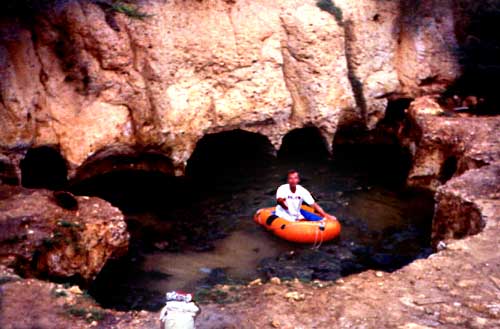 This proposal is part of an archaeological survey of selected areas of the Red
Sea coast and islands with a sailboat to identify ancient ports, anchorages and
shipwrecks especially from the Ptolemaic, Roman and early Byzantine periods
(viz. the 3rd c. BCE until the 7th c. CE). This will include both land and
underwater investigations at stops along the ancient maritime routes linking the
northern Red Sea with the Indian Ocean, in the countries of the Kingdom of Saudi
Arabia, Sudan, Eritrea, Djibouti and Yemen.
This proposal is part of an archaeological survey of selected areas of the Red
Sea coast and islands with a sailboat to identify ancient ports, anchorages and
shipwrecks especially from the Ptolemaic, Roman and early Byzantine periods
(viz. the 3rd c. BCE until the 7th c. CE). This will include both land and
underwater investigations at stops along the ancient maritime routes linking the
northern Red Sea with the Indian Ocean, in the countries of the Kingdom of Saudi
Arabia, Sudan, Eritrea, Djibouti and Yemen. The purpose is to locate some of the ancient ports and settlements from north to south for possible future detailed survey and/or excavation. These would include examination of a number of sites which may be associated with the ancient ports of Charmuthas, Heptaphreata, Bulicas, Leuke Kome, Athrula and Asca along the Arabian coast; Cleopatra’s harbor, Ptolemais Theron, Panchrisos, Berenice near Saba, The Altars of Konôn, the Grove of Eumedes and other ancient coastal cities along the African coast. Such a project has never before been undertaken. We have discussed this endeavor with and received initial verbal approval from the Sudanese authorities and the interest of the Saudi Geological Survey‘s Geoheritage Program. We are now approaching authorities in Eritrea, Djibouti and Yemen to seek their approval for the project.
The expedition for the study of this maritime route will be conducted from a sailboat, which will recreate conditions of ancient merchant ships in coastal navigation, and facilitate access to many remote locations that would be difficult to approach from land.
Objectives
By compiling and studying detailed satellite imagery and combining this with reading the ancient literary sources, Nautical charts, and sparse archeological literature published on this part of the Red sea, we will be able to select among the GPS positions of coastal remains that we believe are most likely ancient settlements linked with the maritime trade route, findings that have not been previously published.
We will anchor the sailboat at moorings with ruins that we have already briefly visited and near the GPS positions that we propose to identify (see list below), and consult with local residents and fishermen to identify ancient remains. The discoveries will be documented precisely using GPS positioning, photography and, where feasible, the drawing of more detailed, measured architectural plans. This data will form the basis for the publication of a gazetteer which can be used in possible, more detailed follow-up investigations and excavations.